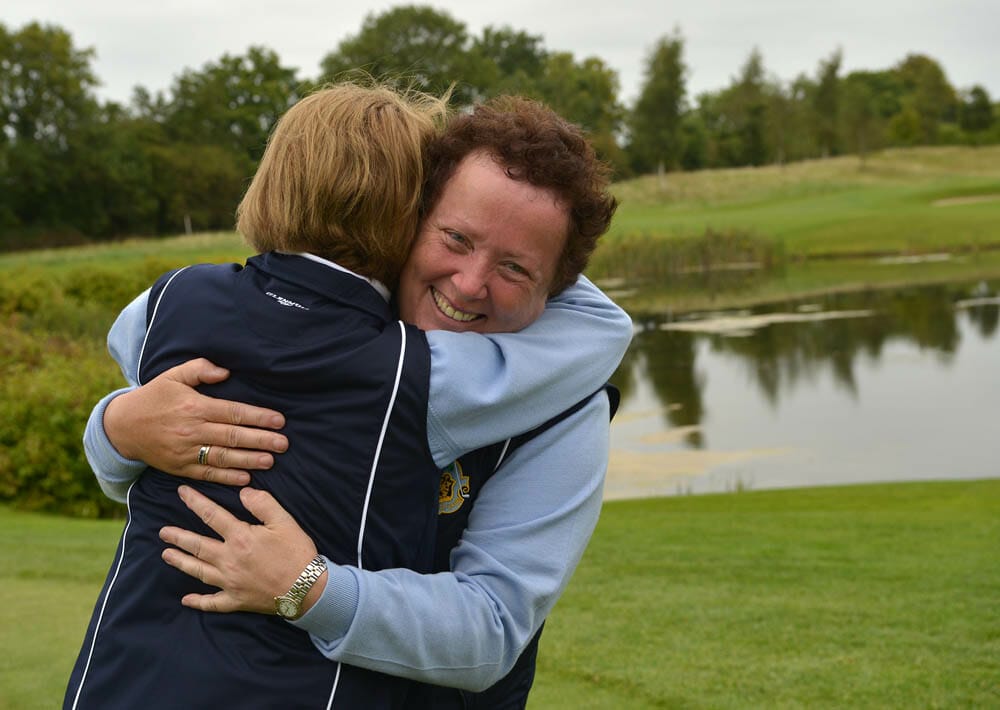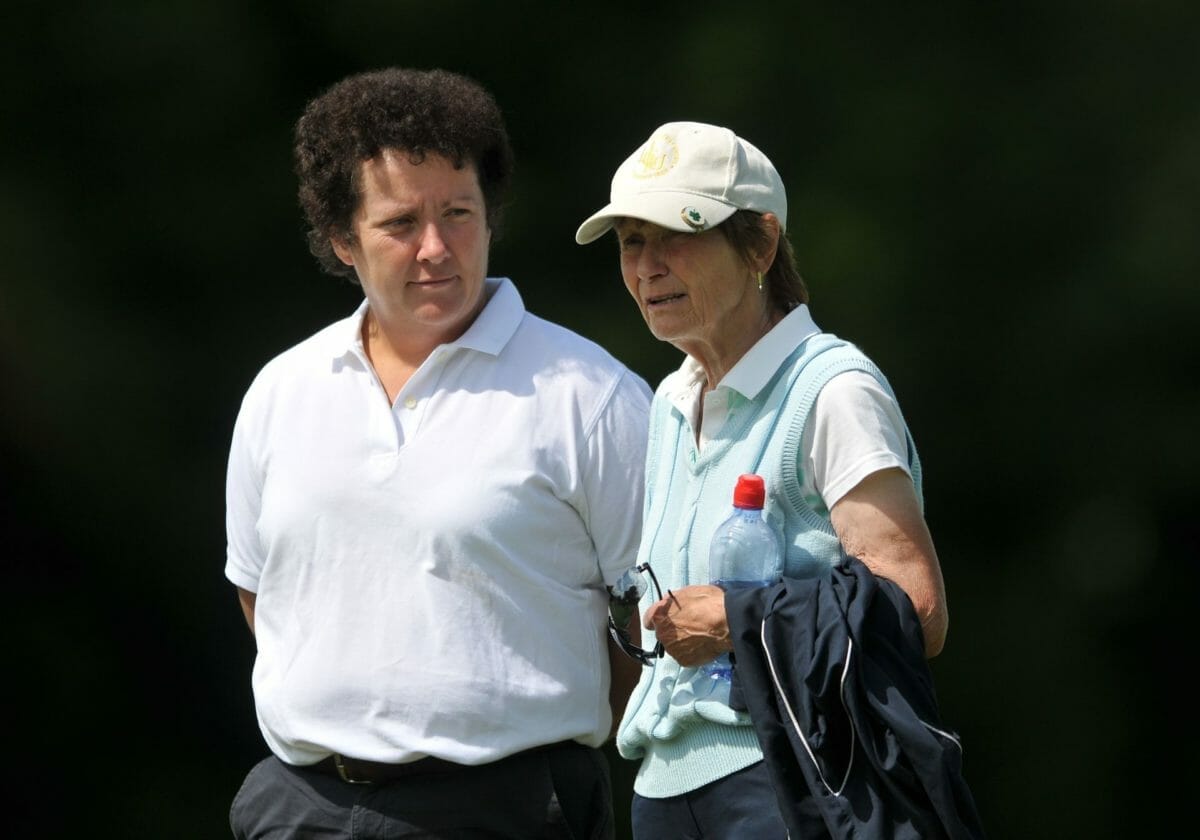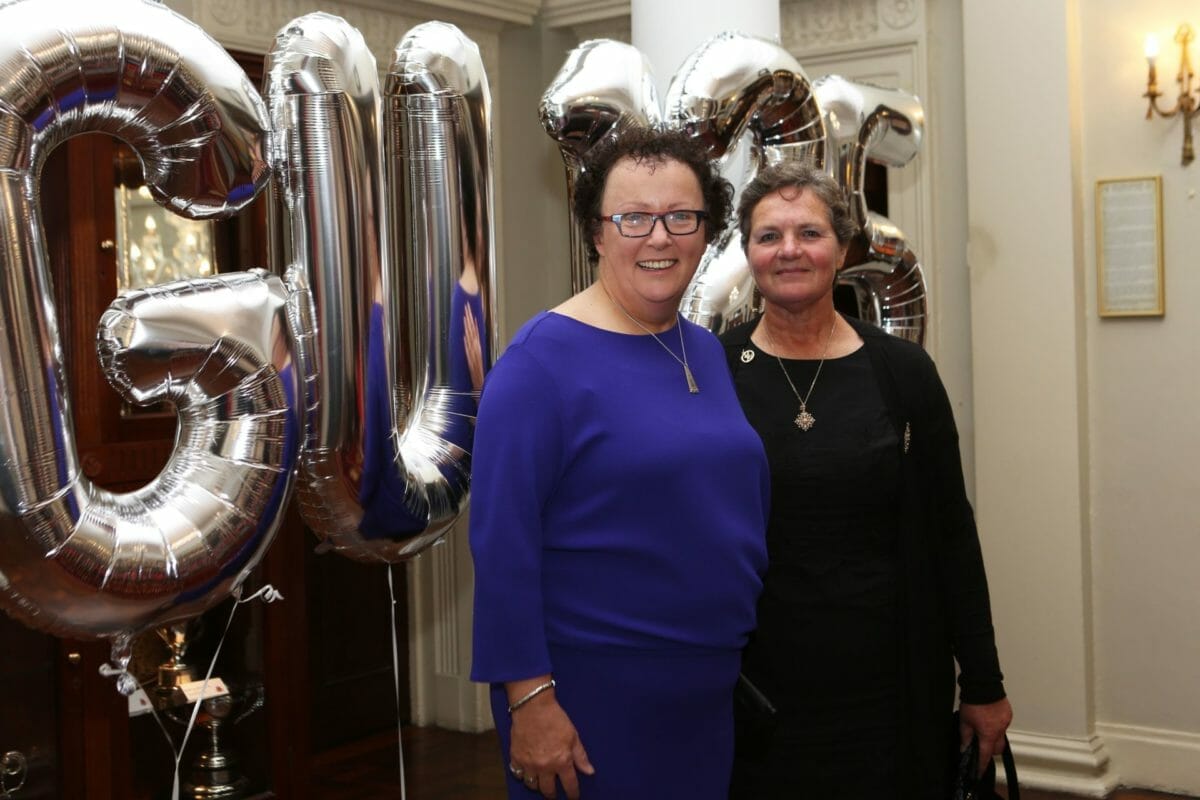History is defined, in its simplest form, by beginnings and endings.
In that context, the year 2020 will qualify as an historic chapter in the story of women’s golf in Ireland.
The presence of Leona Maguire and Stephanie Meadow on the 2020 LPGA Tour campaign is a landmark breakthrough.
Meadow has been there before, but having two players who won amateur honours for Ireland competing at the ultimate level of the women’s game is remarkable.
Their example will no doubt inspire the brightest and best of the upcoming female talent being nurtured via the High Performance programme.
Almost simultaneously, gracefully, but inevitably, the Irish Ladies Golf Union, the organisation which has led the women’s game for almost 126 years, will wind down and cease to exist by the end of 2020. Unity in men and women’s golf via Golf Ireland ushers in a new dimension to a sport that has been governed by the Golfing Union of Ireland and the ILGU since the early 1890s.
These entities, as such, will cease to exist. The new ruling body takes on their duties and more with an official start date of January 2021.
Taken together however, it is surely a sign of hope for the future that Leona and Stephanie are LPGA Tour players in tandem with fundamental changes in our golf administration.
Sinead Heraty, Chief Executive of the ILGU since 2004, believes there is every reason to expect a bright future for the women’s game at every level under the new unified system.
“I think the legacy of women’s golf will be good, and I think we will be a vibrant force within the new organisation, so yes, I’ll be sad to see the ILGU go, but looking forward to it at the same time,” she said.
At some time during next year, Sinead Heraty will bow out of her current role. A date has not yet been fixed for her departure, and between the transition to Golf Ireland plus preparations for the new World Handicap System, the Chief Executive and staff of the ILGU have plenty of work ahead of them. She can, however, and does, sum up the ILGU phase of her working life as: “the best decision I ever made.”
It all started innocuously. Sinead, born in Longford, the youngest of six children of passionate golfers Paddy and Jean Heraty, began getting lessons from County Longford professional Paddy O’Boyle and later Martin Quinn in Athlone. She had the basics and dabbled in the game off a 36 handicap in Longford, but did not play much during her school years.
In 1980 she joined the Bank of Ireland in Dublin. Three years later her aunt, Maisie O’Nualláin was Lady Captain of Castle Golf Club. As Lady Captain, she could take in one member – and when Sinead’s mother suggested that her daughter should be Maisie’s choice, she got her answer:
“I will, as long as she plays golf. I’m not taking her in if she doesn’t play.”
Fair enough, and no problem to Sinead.
“That was the real start of it, in 1983. Started off with 36 handicap, played in my first competition, and duly lost six shots,” she recalled. Fairly quickly Sinead’s handicap dropped into single figures.
“My lowest handicap was four for a very short period of time, but I kind of hovered around five and six, and now I’ve gone to seven which is disgraceful,” she said with a smile.
Within the club Sinead has won the Club championship 15 times, and played on Castle teams that won the All-Ireland Ladies Fourball championship in 2005 and 2006, as well as the All Ireland Ladies Senior Foursomes in 2015. Her one experience of representative level outside the club was with Connacht in the women’s Interprovincials in 1990.
So what was it like being a female golfer in the 1980s and 1990s? Was there a sense of discrimination?
“There absolutely was, but you didn’t know any different at the time, so it’s only looking back on it you can see a lot of very blatant discrimination.
“When I joined Castle in 1983 – you joined as an Associate Member – women weren’t allowed play fourballs. There was a Men’s Bar – it wasn’t a Members’ Bar. It was a Men’s Bar.
“I can remember, we used to have this thing that if there was a Society outing or whatever in the Lounge, if the Lounge was full, you were allowed to go into the Men’s Bar.
“I went in there one time with a friend of mine. The two of us were sitting down having a drink and the barman – I thought it was a lovely way of saying it – once the Society went in to their dinner, the barman came over, and we had ordered a second drink, and he said “would you like me to serve that in the lounge? In other words, ‘get out.’
“As a woman, you weren’t allowed in the Snooker Room. I actually had a letter written to me, by the Committee because myself and my friend Simone Kenny were playing snooker with two guys in the Snooker Room, probably around the mid-1980s, and we all got disciplinary letters to say you couldn’t do that.
“And, of course you had no say in the club, you had no vote in the club. The Management Committee were the Men’s Committee, so they regulated tee times.
“Obviously women couldn’t play on a Saturday. You couldn’t play between 5.0pm and 7.0pm unless you had permission any day other than Tuesday.
“Ladies Day was Tuesday. That was sacrosanct. Woe betide the man who would arrive out on the tee on a Tuesday. He’d want to be very brave. There was no doubt about it. There was wholesale discrimination,” said Sinead.
It should be stressed that Castle were no better and no worse than many, if not all, of the golf clubs who traditionally were male-dominated entities and they reflected broader society at the time.
In fact, when the long campaign for equality for women in golf dating from the mid-Eighties accelerated once the Government enacted Equal Status legislation in 2001, Castle GC were among the first to wholeheartedly embrace the concept.
At the time, Sinead was still with Bank of Ireland, still golfing, and in 2002 she became a member of the Management Committee of Castle.
“I’ll always remember this, one of the guys that was leading it at that time said: ‘Look, let’s park the legislation.
“Let’s forget that we have to do this and let’s work on the assumption that equality is good for golf, and equality is good for Castle. On that assumption, based on that principle, how do we actually do this?”
The principle was excellent and far-sighted, but the transition took some adjustment.
“That was an eye opener, I have to say. You have to understand that in golf, where women had been used to running their own affairs, and men had been used to running the club, there was no experience of club management among female members.
“That was a daunting thing to come into, even for somebody like me who had worked in banking at that stage for the best part of 20 years. It wasn’t just the learning curve for women coming into that. It was also the learning curve for men because they were very used to dealing in an all-male environment.
“So, all of that changed rapidly around that time and some clubs adopted it quicker than others,” she said.
And so, to 2004. The ILGU had advertised for a Chief Executive. Sinead had not seen the ad, but an agency contacted her and asked would she be interested? After some consideration, she decided to explore the option with an open mind and it began to look attractive.
A three year contract was offered by the Union, and after some negotiating with BOI, Sinead was granted a three year leave of absence by the Bank. She started work with the ILGU in July 2004.
What kind of an organisation was the Union at that time?
“Actually, they were a fantastic bunch of women who were hugely knowledgeable on the game of golf. They understood that the organisation needed to be modernised and they understood they needed something different on that.
“So, they had done a Strategic Plan and they had worked with a consultant on the development of that Strategy. In terms of their motives, they were very forward thinking, very much wanting to do the right thing for golf, and very much wanting to grow the organisation and modernise it.
“Therefore, when I came in, you were really pushing an open door in terms of change, which really made my role an awful lot easier,” she said.
Changes began to happen quite quickly. A proposed move to Carton House to share headquarters with the GUI did not work out, and the ILGU clubs supported a levy to purchase their current office in Sandyford. The Districts got behind the National Finals, originally sponsored by A.A Insurance – now known as the AIG Ladies Cups and Shields – which has proven a great success.
In 2008, the ILGU changed its internal organisation to become a Company Limited by Guarantee. Investment was made in Girls golf and a High Performance programme was introduced. And then, the banking crisis caused huge upheaval in the financial systems with devastating effects on the economy.
While all that was going on, Sinead was still working away with the ILGU.
In early 2009, she contacted BOI and was told she effectively had another year’s leave of absence. Later that year she made a big decision to leave the Bank.
“I really enjoyed what I was doing here and I liked the way the whole thing was going. We had moved office. We had got the inter-club finals up and running. There was starting to be talk at that stage of “Is the next step coming together with the men and how do we actually do that?”
“Wales had merged in 2007. England were talking about it. Scotland were talking about it. They hadn’t actually done anything about it, but they were moving in that direction.
“At that stage I resigned from the Bank and said “I’m here. It was the best decision I ever made.”
Just a decade later, so much has happened in golf and for Sinead. The GUI, ILGU and Confederation of Irish Golf are in the process of winding down to form Golf Ireland. A unity of purpose by all three bodies has hammered out a structure that opens new horizons for the game.
This was achieved through long hours, days, weeks, and even years of patient negotiation and compromise on all sides. And through it all, Sinead had to deal with a diagnosis of breast cancer in 2012.
“That was a frightening period. But on the other hand, seven years later, I go for six monthly check up. The fact I’m on a six monthly rota means that you don’t really have an awful lot to worry about.
“I have to say that the organisation (ILGU) were superb at that time. I think what you find when you go through cancer is that the way that people deal with it can be very, very different.
“And you have to figure out what’s going to work for you. Nobody else can really judge that. So for me it was important that life continued on a normal footing,” she said.
The routine became chemotherapy every third Monday. For three days afterwards Sinead’s energy would be boosted by steroids given as part of the treatment. The weekend would be an energy wipe out, and slowly the energy would rise again the following week.
Golf became an important part of Sinead’s approach to dealing with the cancer and the toll the treatment took on her body.
“To maintain my sanity, one of the things I used to do was, still come into work. Do the odd couple of hours. I used to suit myself in terms of the number of hours I was going in, but you kept things going.
“I would play nine holes of golf on a Tuesday, the two Tuesdays in between the chemotherapy, so that there was a normality to this. This was something that you were dealing with but for me, it wasn’t going to be all-consuming.
“My form of cancer was breast cancer, so you’re going into an all-female environment because you’re playing on a Tuesday, still Ladies Day. Everybody is very supportive of what it is, and you can do as much as you can or as little as you can, and it really doesn’t matter.
“But if you’re out in the fresh air and you’re with friends and you’re walking and you’re talking, it does wonders for your mental health, and particularly as you’re going through that,” she said.
Friends and other people, particularly those who had gone through the same experience proved very helpful.
“It’s a frightening time but then you realise that you’re not going to die immediately and people are very good.
“A woman who had gone through breast cancer rang me up and said, ‘Sinead, you live with breast cancer rather than die from breast cancer’.”
Sinead reached the five year milestone clear of cancer in 2017. She still gets her six-monthly check-up and carries on with life as normal.
“It’s a huge milestone in getting by five years. For me that was 2017.
“You can’t give these things a lot of energy. Been there, now move on. My energy now is good, except now it’s battling age!”
And so, to the future. The work of transition will continue but the end is becoming ever closer.
“Mark Kennelly has now been appointed as Chief Executive of Golf Ireland.
“We’re going to have a handover period and all of that, so I would say it will be some time next year because as Golf Ireland goes into its ascendancy, naturally ILGU and GUI are going the other way. We’re winding down as it’s winding up.
“I would say my departure is going to be some time next year. I have to say I look forward to it because I’m seeing it as a new chapter.
“It’s the next stage and I’ve lots of things that I would love to do, but I will be sad to see the ILGU go. I think it’s been a superb organisation,” said Sinead.


























Leave a comment